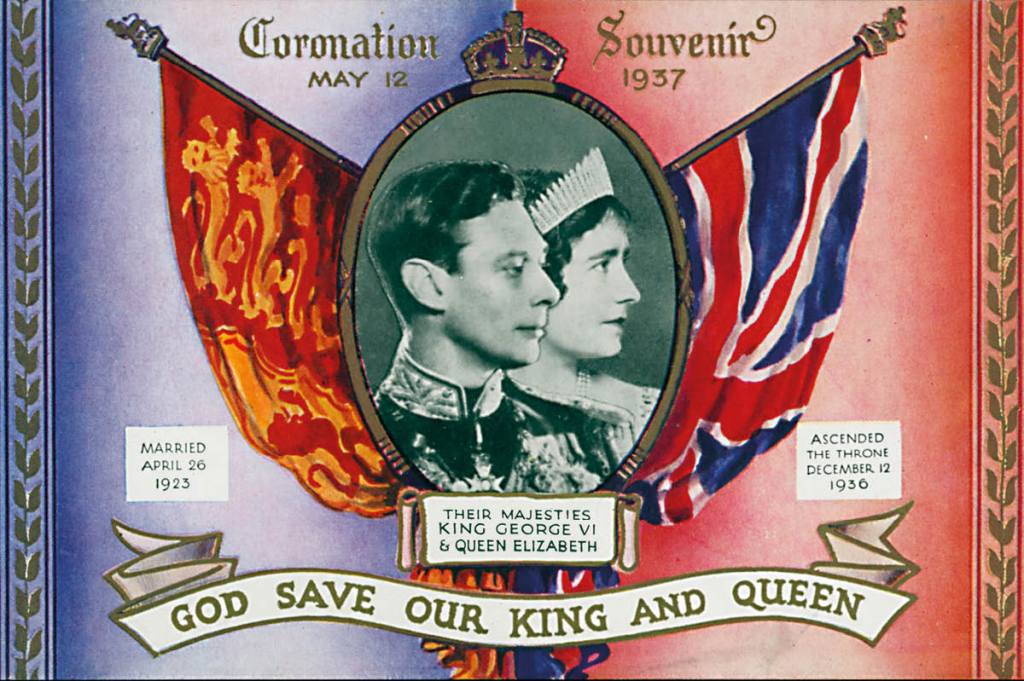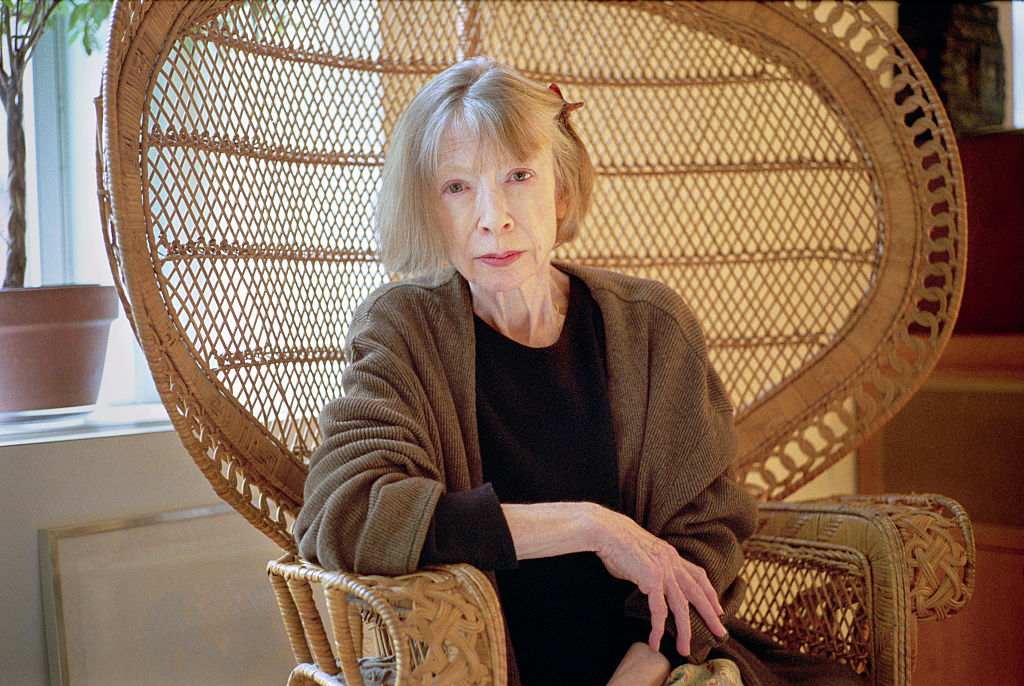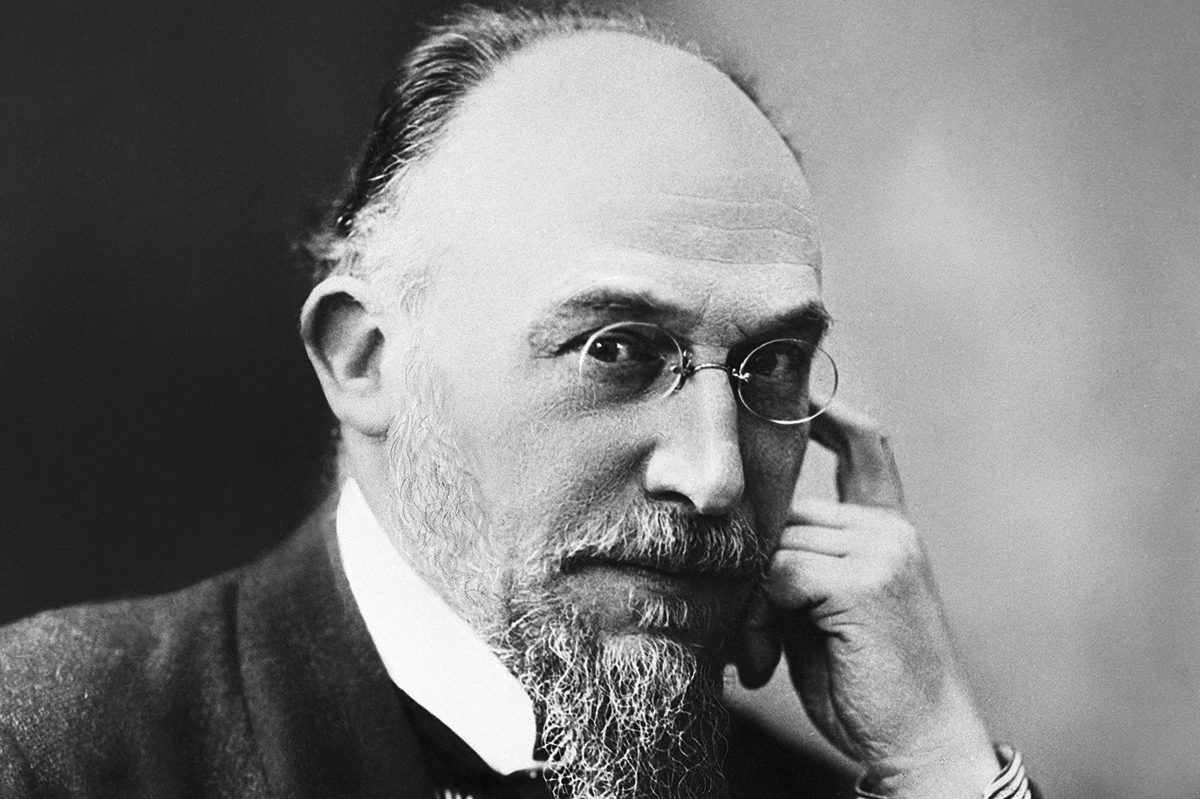In some ways, the world of George VI and his consort Elizabeth, the future Queen Mother, from 1936-52 was very different from how we envision that of today’s British royal family; its rituals seem to belong to an era of Jurassic antiquity. In George’s day, Britain was still a global power, and its monarch ruled over both an empire and an elaborate court system with a “Page of the Backstairs” and a “Yeoman of the Pantry” — not to mention a fully staffed, oceangoing yacht — at his disposal. His coronation in May 1937 was as protracted as that of any maharajah. The Edwardian braid and sashes on display during more recent military pageantry look sadly Ruritanian by comparison.
In other ways, their lives resonate more clearly with our own. George, known in the family as Bertie, was a bit eccentric in some of his habits, but almost painfully conscientious in his public duties. He had a morally vacuous older brother and a forcefully jolly wife quite capable of being on “nonspeakers” with her enemies, as well as an older daughter who was devoted and stoical, and a younger one who became a symbol for an age that promoted style over status, while by no means renouncing inherited privilege: this brings to mind a certain “heir and spare” dynamic of more modern vintage.
Bertie himself was the second of sixth children, handicapped by knock-knees and a stammer, not to mention the family’s very modest pretensions to intellect. Completing his studies at the Royal Naval College, Osborne, at the age of fourteen, he ranked sixty-eighth out of his class of sixty-eight. He spent most of the first half of his life in the shadow of his brother Edward, known to intimates by the last of his seven names, David, who was always more taken by the promiscuous debutante set that hovered around court than by the bland rituals of public duty.
Sally Bedell Smith has made reading about the brothers and their circles intriguing through her use of family letters and apt quotations: the superficially charming but emotionally stunted David, for instance, writing to one of his many mistresses in the years following World War One, complained, “Gud [sic] how I loathe all the official work … It’s rotten having to trot around with the King, really, such a waste of time.”
Though not immune to the allure of being Britain’s second most eligible bachelor — there’s a generous amount of detail about costume balls in drafty old houses, and weekend shooting parties attended by a comic cast of gardeners, cooks and butlers — in April 1923 Bertie settled down to marry Lady Elizabeth Bowes-Lyon, the ninth child of ten from an ancient Scottish family. The new bride was apparently carefree and gregarious in manner, and clearly brought out the best in her husband. The author quotes several moving instances where Elizabeth, aided by the vocal coach Lionel Logue, helps Bertie to overcome his stammer and rise to the challenge of a major public speech with his wife always sitting nearby, her lips moving with his. “You were GRAND,” she proudly informs him on one occasion.
Unlike other royal biographers, Smith discreetly leaves her subjects alone at their bedroom door, although she does quote one exchange in which the couple discusses the arrangements for meeting after a brief separation. “It seems all wrong that we shouldn’t be together, doesn’t it — from your very very loving E Xxxxxxxx kisses Oooooooo hugs,” Elizabeth wrote. Bertie assured his wife that he would be back with her in time for lunch. “Two lunches of course. One from you I hope darling, & then an ordinary culinary one.” Perhaps as a result of these trysts, in 1926 and 1930 Bertie and his wife produced two daughters — the future Queen Elizabeth II and her sister Margaret.
By contrast, for David there was the expensive and elegant Wallis Warfield Simpson. She was an American, which was bad, and already had two living husbands, which from the moral standpoint of the Church of England was far worse. David himself once wrote in a moment of candor that he was “the kind of man who needs a certain amount of cruelty.” If so, he seems to have found it with the woman Elizabeth dubbed “the lowest of the low,” and whom a widely circulated, anonymous article would portray as a “Delilah and a harlot,” among other unappreciative terms that might raise eyebrows among even the present Duchess of Sussex’s critics.
For Bertie and Elizabeth, the years from 1923-36 were a mixture of London society and country frolics out of some bucolic P.G. Wodehouse tale, along with an increasing number of public duties. Most of them seem to have occurred in a steady English drizzle. In June 1926, the thirty-year-old prince and his forty-five-year-old partner Louis Greig actually competed in the men’s doubles tournament at Wimbledon, but went down to a straight-sets defeat. “Bertie had been rattled from the start, overwhelmed by the noise and proximity of the crowd,” Smith writes. “He never again played tennis in public.”
Everything changed on the night of January 20, 1936, when the royal physician injected the mortally ill King George V with a solution of morphine and cocaine in order, as he put it, to “preserve His Majesty’s dignity, and ease the strain on his family by cutting short his life.” As the world knows, David lasted less than a year as King Edward VIII, informing his subjects that he could not “discharge my duties… without the help and support of the woman I love,” ultimately settling on a well-heeled exile in France. Movingly, Smith quotes the princes’ mother Queen Mary describing Bertie’s torment on ascending the throne as George VI. “The whole abdication crisis made him miserable,” she recalled. “He sobbed on my shoulder for a whole hour upon the sofa.” That was mild compared to the lifelong froideur that descended between the new king’s wife and Wallis Simpson, who was elevated to become Duchess of Windsor, but never to the title of Her Royal Highness. Speaking three years after the abdication, Elizabeth expressed relief that on a return visit to London, the duchess “kept away, & nobody saw her,” adding that the British had not forgiven “what he did to this country, and they HATE her!” Wallis in turn described her rival as “that fat Scotch cook.”
The author’s account of this dysfunctional royal quartet cannot, unavoidably, always make them personally attractive, but it can, and does, provide a revealing picture of their turbulent times. It’s hard to take exception to her central thesis that George VI and Elizabeth rose to the occasion during World War Two (“I’m glad we’ve been bombed; it makes me feel I can look the East End in the face,” the Queen famously remarked after Buckingham Palace was hit by the Luftwaffe), whereas the Duke and Duchess of Windsor appeared to take a more narrowly material view of the whole affair. Confiding to his diary at the time Britain stood alone against the Axis powers, the King wrote of his brother that “he would only return here on the condition that his status and financial position were first regulated.” To David, the great struggle for his country’s survival came down to the question of his tax status and his wife’s title.
This otherwise well-presented book would have benefited from the inclusion of a royal family tree, and there are one or two minor errors of fact: the Duke of Windsor could not have returned to London for the first time since his abdication on Tuesday September 1, 1939, as the author says, as that was the momentous date (a Friday) on which Germany invaded Poland, an event the Windsors followed from their rented estate on the Riviera. Similarly, Franklin Roosevelt and Winston Churchill did not meet for the first time off the coast of Newfoundland in August 1941, having formed a notably dim impression of one another at a dinner in London twenty-three years earlier. Nor is it quite true that “everyone was stunned by the result” of the July 1945 general election that swept Churchill from power, since a certain John F. Kennedy, then a twenty-eight-year-old roving correspondent, predicted as much in the pages of the New York Journal-American. But these are quibbles: for the most part Smith is both fair and readable. She wears her learning lightly, writing in a compelling, always lucid style, consistently locating the human drama at the heart of the story with elegance and as much humor as the recurring anguish of the times permits.
As the book’s title suggests, Bertie and Elizabeth may well have saved the monarchy, if not the freedom of Britain itself. But it’s worth noting that if David had in fact given up the woman he loved, withstood Hitler and remained on the throne until his eventual childless death in 1972, his brother having predeceased him — some pretty big ifs, admittedly — the crown would still have passed to the woman the world knew as Elizabeth II. So perhaps we might now all be celebrating the coronation of King Charles III, after all.
This article is taken from The Spectator’s June 2023 World edition.

























